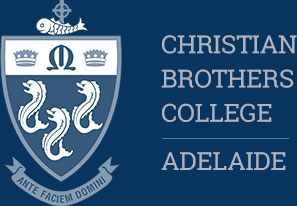50 ways to improve your child’s attention span and behaviour without drugs
Used with permission from Thomas Armstrong.
Include a balance of complex carbohydrates like cereals, bread, pasta, proteins like milk, yoghurt, cheese, eggs, fish and fruit, fresh, canned or juice.
Limit your child's intake to synthetic food dyes, artificial flavours, flavour enhancers and preservatives. After a period of total abstinence from food with additives you can begin reintroducing foods one at a time while looking for behavioural reactions to specific additives.
It is suggested that frequent changes of camera and focus may actually program a short attention span. Television advertisers capture a viewers attention by capitalizing on the brains instinctive responses to danger through the use of sudden noises, close-ups, pans, zooms and bright colours and may be reducing the child's natural ability to remain actively focused on events in the real world.
There is substantial evidence that television watching can promote aggressiveness in children.
Television and video games also take children away from activities that are more active, multi-sensory and intellectually, socially and emotionally nourishing.
Self talk represents a process whereby an individual develops keys phrases that can guide him through a complex situation. He learns to repeat phrases to himself at appropriate times of need.
Self talk can assist in developing self control of anger by silently repeating phrases such as "keep cool", "chill out", or help to organise themselves using questions such as "now where do I begin" as a prompt, to help a child form a more positive image of themselves by repeating "I can do it if I try".
After allowing the child to chose an appropriate phrase, train the child to use it in four stages:
- Say the phrase out loud
- Whisper the phrase
- Move the lips only
- Say it silently
Rather than focus on the things the child is NOT interested in find out what does interest him and help them to develop in these areas. To find out what interests him observe during times when no-one is telling him what to do and see what activities absorb his energy and attention.
Students who run and participate in jumping or field exercises for forty minutes a day show less aggression on the days they exercise than on the days they don’t.
Martial arts train children to control their boundless supplies of energy, develop a skill that is highly valued in their peer group and promotes respect for others through their ritual courtesies and ethical values such as bowing.
Seven ways in which children learn or solve problems:
- Linguistic – through use of words. These children need books, audio tapes, writing implements, discussions, debates.
- Logical-mathematical – through use of reasoning. These children need logical problems to think about, science kits, maths games, brainteasers.
- Spatial – use of pictures and images. These children learn through art activities, Lego, video, illustrated books.
- Bodily-kinesthetic – use of physical skills. This child needs to role play, drama, movement, tactile experiences and hands on learning.
- Musical – use of melody, tone and rhythm. This child needs singalong time, musical instruments, records, musical lessons.
- Interpersonal – learning through socialising. This child needs friends, group games, cooperative learning, mentors.
- Intrapersonal – use of knowledge or reflection. This child needs secret places, self paced activities, independent study, opportunity to make choices.
- A combination of these strategies in one day will help to cater for all learning styles.
Change how you think about your child from a negative label to positive attributes.
| Instead of thinking of your child as: | Think: |
| Hyperactive Impulsive Distractible A daydreamer | Energetic Spontaneous Creative Imaginative |
| Inattentive Unpredictable Argumentative | Global thinker with a wide focus Flexible Independent |
| Stubborn Irritable | Committed Sensitive |
| Aggressive Attention Deficit Disordered | Assertive Unique |
To apply natural consequences ask, “What would happen if I didn’t interfere?” What are the inevitable consequences of a child’s actions that don’t require the intervention of a parent? E.g. The child won’t eat his dinner. Consequence is hunger.
Have your child teach A younger child.
Work towards achieving consensus rather than the majority rule in decision making.
Provide clear consistent rules and expectations within the context of a caring, loving family.
| Children misbehave to: | You respond by: | Child’s response | Dealing with it |
| Seek attention | Irritated, annoyed | Stop and resume later | Ignore and give positive attention |
| Achieve power | Threatened | Resists and escalates | Allow cooling off and problem solve later |
| Seek revenge | Hurt | Retaliates with something hurtful | Don’t retaliate, invite cooperation |
| Display inadequacy | Inadequate | Passive aggression, wears you down | Teach skills in the area of inadequacy |
Allow your child to choose the time, place or method for doing chores or homework. Include him in decision making about family outings. Keep the things you want done non-negotiable. E.g. Going to bed but offer choices in colours of pyjamas.
Avoid communication barriers:
- Assuming – “I didn’t tell you that because I knew you’d get angry”.
- Rescuing – “Remember to take your homework with you”.
- Directing – “Pick up your clothes”.
- Expecting – “I thought I could count on you to behave”.
- Adultism – “You know better than that”.
Instead use communication builders:
- Checking – “What were you thinking I wanted you to do?”
- Exploring the what, why, how – “What could you do differently?” “Why were you so angry at me?” “How did it happen?”
- Encouraging – “I would really appreciate it if you could . . .”
- Celebrating – “I think you did a terrific job on . . . .”
- Respecting – “I’d love to hear your ideas for solving this problem”.
Use active listening, “I” messages and pay attention to non-verbal communication.
Explain that you’d like your child to do something for you or change a behaviour and that in return you will do something for him. Explain the problem or the behaviour you currently see and what sort of change or behaviour you would like to see. In return for the specified behaviour you are willing to do something for him that he would enjoy, like read to him, play footy, watch him ride his bike.
Social skills are not innate but learned by modelling from parents, siblings and others and by practicing within the peer group. Encourage participation in non-competitive and low stress activities such as swimming or arts and crafts. Have your child invite home a friend. Role-play appropriate responses to difficulties experienced during the day.
At school use cooperative learning as a base for instruction. In this approach children work together in small groups to develop projects or finish assignments. Use a buddy system where an older child takes a younger child under their wing and helps him with school difficulties. Arrange for your child to be paired with someone with excellent social skills.
The hyperactive child in a low stimulus environment such as a time out room or corner will tend to create their own stimulation. To use time out in a positive way, think of time out s a basketball coach would: an opportunity to take a break from action, refresh the body and pull the game plan back together.
Explain to children that we all get angry at times and that at those times it can be helpful to have a place we can go to sort things out, make ourselves feel better, and put us back in the right frame of mind to face the problem in a more constructive manner. Show children how to use the timeout area to gain control and feel better through self talk, visualising an image that helps them cope, meditating, doing physical relaxation exercises and thinking about solutions to their problems.
Many children labelled ADD respond to problems such as conflicts with parents, school difficulties and peer rejection by impulsively acting out their feelings of anger, disappointment or rage than deal with the situation directly. By teaching children problem solving skills we can help them develop alternative ways of confronting life’s challenges.
A four-step plan for problem solving:
- What’s the problem? Help your child describe the problem.
- How can I solve it? Assist in brainstorming ideas.
- What’s my plan? Help him choose the best option and role play to develop confidence.
- How did I do? Did it work, will I do the same next time or should I do something differently?
Offer Your Child Real Life Tasks To Do By giving the child real life things to do they are:
- Treated with respect and thereby develop responsibility,
- They are given opportunity to interact with the real world which offer them the opportunity to discover rules, routines, challenges and difficulties that are part of being a member of society,
- They find out what they are good at.
In family systems theory, each member of a family is seen as an interconnected part of a whole and each member influences and is influenced by every other member. Problems that arise in individual members within the family are not seen as the unique problem but rather as a problem in the family system. This may help to understand why the ADD labelled child is considered to be more or less difficult to manage by different individuals within the family or in different environments. E.g. home vs. school.
Family therapy may assist with strategies for coping with restless, impulsive children, or look at family patterns or interactions that may underlie the behaviour of one member of the family. It does not attribute blame for your child’ s behaviour to you, but suggests that your child’s symptoms are part of a larger structure that may include other members of the family including significant relatives.
Children labelled with ADD do very well with computers. Software programs provide instant feedback and instant reinforcement. They allow the users to control their own pace and are often colourful, animated and graphically interesting to look at. They are non-judgemental and take a person from their current level of performance to higher levels in small steps, and can be used alone or with others.
Providing immediate feedback to children about their behaviour helps them to realise how it looks to others and enables them to take responsibility for that behaviour. You can provide feedback through using camera, video or audio recorder, full- length mirror, or by following them and describing their behaviour on a non-sarcastic, non-shaming way, or limiting their actions.
Train your child in focussing techniques used in meditation. Starting with short sessions of a minute or two, have the child focus on an internal or external object, then when distracting thoughts appear have him refocus on the central object without getting worked up about having strayed.
Gradually it is possible to lengthen the time spent focussing the attention. In class use this process before teaching new concepts.
Learn how to diffuse tension when locked into a power struggle with your child. Sometimes just a few deep breaths will stop you from yelling at your child. At other times you may need to get away from the situation for some time out. For even deeper relaxation learn meditation, yoga, massage, simple exercises.
Create a life away from your child doing activities that give you personal satisfaction and recharge your batteries. Create an effective support system for yourself using family, friends or support groups. Consider professional help in dealing with your parent-child conflicts.
Kids who experience repeated failure undergo a kind of surrender of the spirit where the lights of curiosity, initiative and effort slowly begin to die out. They attribute things that happen to them as being out of their control, learned helplessness. This is reinforced through attributing labels of ADD and prescribing of medication in order to behave.
Successful students are more likely to attribute their performance to factors they do have control over, such as “ I really worked hard on that assignment” or “I didn’t spend enough time reading the question”. Students can be taught to use positive self attributions such as “I need to try hard” or “I need to remember what we learned this morning” and then when receiving their results connect their performance with a positive attribution, “I didn’t do well because I forgot 2 clues” or “I did well because I used the tips the teacher gave me”.
At home, make a list together of all the reasons for doing well or poorly in class work, go over the list and highlight those he has the most control over and encourage use of attributional statements like “I do well when I try”. When your child shows good effort let him know about it.
Many kids with attentional difficulties also have difficulty with getting organised. They need help with:
- Remembering homework assignments
- Using time efficiently
- Organising home and school space
- Doing household chores
- Building up self organisation
Touch appears to stimulate the release of endorphins in the brain that have a pain relieving effect similar to morphine.
Non-sexual forms of touch can benefit the child who has a high degree for tactile stimulation as demonstrated by their touching walls and furniture, bumping roughly against friends or fidgeting at their desks.
Touch can relieve chronic levels of stress that build up through school problems, peer conflicts and home tensions. Use hugs, back rubs, foot massages, tickling, using acupressure.
Psychotherapy may help with relieving anxiety (25% of kids with ADD also suffer anxiety) and depression (75%). Children can be helped to resolve emotional conflicts, shape new behaviours or think about their actions in new ways.
Create nooks or corners for individual study at home or at school. In class mark off individual personal territory with tape.
Read, walk, play board games, listen to music, tell jokes, draw pictures, cook together, repair things, build something, do a puzzle, do magic tricks, play with the dog, play a sport, go on a picnic, tell stories, solve brainteasers, etc.
- Give your child something to do with his hands while he’s involved in stationary activities.
- Provide opportunities for tactile stimulation such as a “feely” box filled with sand, polystyrene, oatmeal or shredded paper for the child to run fingers through either as an activity on its own (play what’s the mystery item) or to occupy busy hands.
- Supply 3D building materials for free play to use up excess energy.
- Use manipulative materials to teach academic subjects.
Channel your child’s creative energies into music, dance, the theatre or painting or set up a “mess” corner for artwork, dress up corner or music corner with a variety of percussion instruments and a tape recorder.
When repeated attempts at regular educational settings don’t work consider some of the alternative school settings, which allow students to progress at their own pace and in their own learning style.
Many people who are now well known from history were considered to be difficult to manage as children and many fictional and cartoon characters are energetic and unpredictable. Choose class or home activities that research successful characters who were also hyperactive, distractible or impulsive as children. E.g. Dennis The Menace, Garfield, Florence Nightingale, William Wordsworth, Pope John XXIII, Lois Armstrong, Beethoven.
If children aren’t paying attention, find out what they are paying attention to and put the material they are to learn in the middle of their field of attention. If the student attends to his buddy’s talking have the buddy to the teaching of the material, if the student is thinking about something not related, incorporate this into the lesson. E.g. in a lesson on solids, liquids and gases a student has his mind on Ninja Turtles ask him ‘is your ninja turtle a solid, liquid or gas?’
Support Full Inclusion Of Your Child In The Regular Classroom
Relieve your child’s stress through physical relaxation exercises such as hatha yoga, progressive relaxation training or other relaxation activities such as throwing a ball against a wall, listening to music, gazing at clouds, walking, daydreaming, rocking or other rhythmic or repetitive exercises.
You can help stimulate the career aspirations of your child who has a need for novelty, change imagination, movement and spontaneity by exploring with him a wide range of high variety, high action, high movement vocations by trips to the library, career reference centres or videos.
See a trained psychologist who has the necessary equipment and has previously worked with children with attention difficulties. Biofeedback involves the use of the child’s control of the electrical activity of the brain to vary the types of brain waves produced and thereby the amount of focus on a task.
Experiment with the amount of stimulation in the child's environment to determine the optimum amount for learning. It is suggested that rather than being overstimulated, that overactive kids might be underaroused and actually learn better with a larger dose of stimulation and if they don’t get it they create their own. Use a variety of novel and stimulating activities rather than boring worksheets.
Sing your instructions or use a particular piece of music to prompt regular tasks.
Portray usual instructions in unusual ways, e.g. instead of 'turn off the lights' ask your child to 'turn on the dark'.
Use visual reminders on windows, doors or fridges, e.g. drawings or photos of the activity or items to be remembered.
In class, cue your students into attending with a special signal, such as music, switching lights on and off, a sound.
Schedule activities requiring short term memory and problem sloving during the morning hours and more open ended experiences and those requiring motor activities in the afternoon for students who appear to be more restless in the afternoon.
Keep a record of your child's activity rhythms and alert the child's teacher so that best times for learning can be used.
Use success sharing time when eating or keep a scrap book.
Some children need movement in order to learn, rather than sitting quietly at their desks. For children who squirm, wiggle, niggle provide opportunity for physical activities that do not disturb other students. In class this may include being allowed to stand, kneel or lie down when working, using energizers during the day, using tai chi, using movement to learn, e.g. spell by sitting for consonants, standing for vowels, walking while chanting tables.
Symptoms of allergies include irritability, hyperactivity, fatigue, inability to concentrate, stuffy nose, dark circles under eyes, puffy eyes, abdominal pain, headaches.
Foods commonly implicated include soya products, cow's milk, chocolate, grapes, wheat, oranges, cheese, eggs, peanuts, corn, seafood, oats, melons, tomatoes, sugars, cola and ham.
To determine possible causes of behavioural reactions implement an elimination diet as follows: Prepare meals that contain allowed meats, vegetables fruits and nuts, rice and water but eliminates the above foods.
Keeps a diary of your child's behaviours starting three days before the diet begins. Eliminate suspected foods for five to ten days or until symptoms show improvement lasting at least 48 hours. Begin to add suspected foods, one a day. If a food appears to provoke a reaction don’t give anymore and wait until symptoms subside before adding any new foods. Involve your child in the process, possibly turning it into a game of 'catch the culprit'.
Visualisation can be used for both retaining what is learned by forming a picture in ones mind or for coping with ones behaviour. Some images that can be suggested include:
For calming down:
- A special place in nature
- A favourite trip
- An imaginary journey
- A secret place
For focusing:
- A favourite colour
- A favourite toy
- A special hero
- A favourite movie
For responding to criticism:
- Ducking arrows
- Letting the breeze pass around
- Falling off like water off a duck's back
- Using an imaginary light sabre
- An imaginary protective white light
Deliberate use of colour to highlight material to be learned can assist learning. Use colour to highlight specific words, numbers or text, or have students use highlighter pens to underline. Children can also use a variety of coloured pens, pencils, crayons, chalk.
Highly stimulating music such as rock may have a calming effect resulting in reduction in motor activity. The prominent beat appears to override surrounding environmental sounds providing focus. Experiment by asking your child to choose the type of music he would like to listen to whilst learning and take notice of beneficial or detrimental effects. Different types of music may be selected on the basis of mood or time of day.



